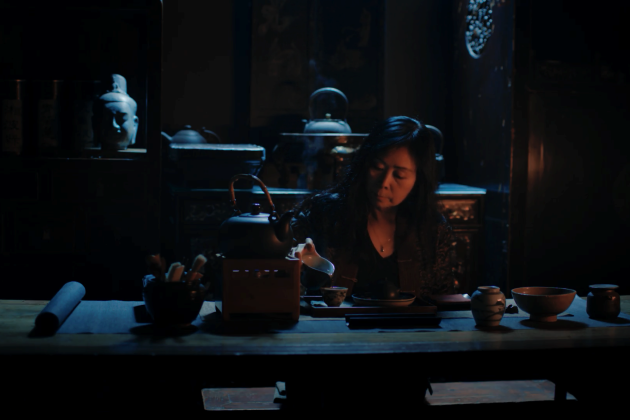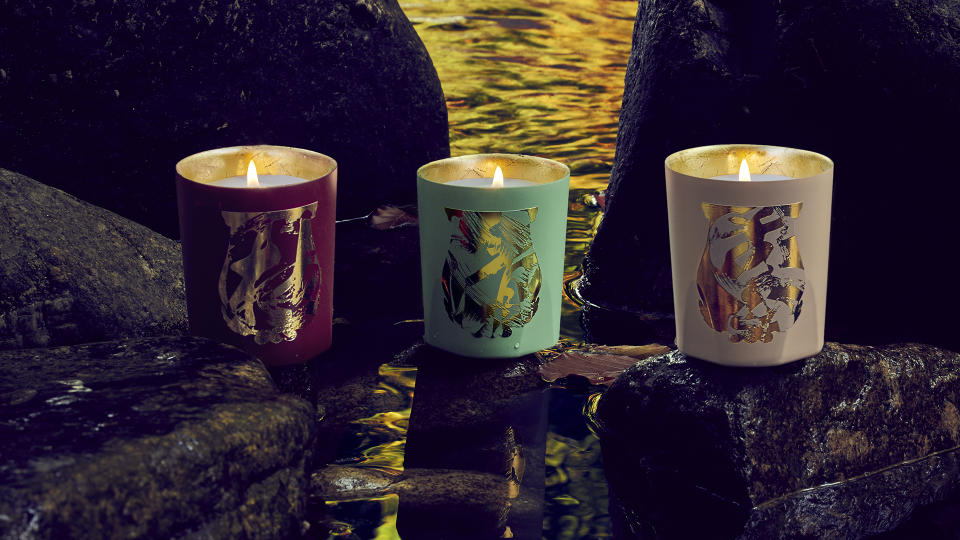These Candles Are a Perfect Brew Between Trudon and Tea Master Tseng

For the layperson, there is no secret ingredient in tea. All it takes is water, fire and a few leaves of Camellia sinensis, an evergreen shrub native to the Indian subcontinent, East and Southeast Asia.
Yet thousands of years of subtleties are at the heart of a collaboration between the candlemaker Trudon and Yu Hui Tseng, the Paris-based, first-ever female tea master of Chinese tradition.
More from WWD
Descended from a family of scholars that started with the first disciple of Confucius — she’s the 78th generation — Tseng is an award-winning clarinetist who studied the gongfu tea ceremony under reputed masters. More than 30 years ago, she came to Paris and made it her mission to introduce the Western world to tea with the opening of La Maison des Trois Thés, a tea cellar and salon in Paris’ fifth arrondissement, not far from the Panthéon.
Over the years, her unique skills and tastebuds have led to conversations and collaborations with Michelin-starred chefs such as Guy Savoy and Pierre Gagnaire; chocolatier Jacques Génin; pastry chef Pierre Hermé; spice specialist shop Epices Roellinger, and Andreas Larrson, named “World’s Best Sommelier” in 2007.
When Trudon creative director Julien Pruvost was first introduced to the tea master’s world by an epicurean friend, he was intrigued.
But when the French brand approached the tea master with the idea of doing candles together, her initial reaction was tepid. “I’ll confess that I received the proposal with a degree of skepticism,” Tseng says. “I didn’t see how to transcribe the complexity of tea into a scented candle.”
Nonethless, Pruvost came around for tea or, rather, an introduction into the tea master’s library of hundreds of references, including some that are decades-old and aged like fine wine.
An approach started to take root, Tseng recalls. “[Pruvost’s] sensitivity, his attention, his respect for the universe of tea and his interest for the symbol of water made me realize that if tea as a material could not cohabit with the medium of wax, it could be used to reflect the spirit of tea, like a luminous imprint,” the tea master says.
Opening each box reveals scents that have little to do — at first whiff — with the warm beverage. “On the contrary, we were careful not to represent tea. That was the sine qua none condition from Master Tseng: to work in a different register because the tea she develops and conserves has been elevated to an art,” says Pruvost, who describes her work as one of “rare sophistication and an extreme naturality.”
He recalls having gone to their initial meeting without preconceived notions but also without expectations, having tasted high-end tea brands before. “It was nothing like this and this entire universe attracted me,” he continues.
“Perfume houses ‘know’ tea notes but they cannot be extracted per se, you can only represent it,” Pruvost explains. So instead of going down the path of “Dada,” a tea-scented candle launched early in the revival of Trudon, the throughline here is the idea of water falling from the sky and being enriched by the elements it encounters.

There is the transparent accord of mineral notes, cedar, cypress, with hints of pepper and juniper berry in “Sous un Ciel de Pétales” (or “under a sky of petals”) by Grasse-based perfumer Vincent Ricord of CPL Aromas, which alludes to the mythical paradise of Shangri-La through notes of jasmine sambac, jasmine grandiflorum, guaiac wood and light touches of incense; “L’Esprit de l’Eau,” (or “the spirit of water”) by Givaudan’s Benoist Lapouza, and mossy, almost peaty “Terre à Terre” (a play on a French expression for being too-grounded in earthly pursuits), by Givaudan perfumer Mylène Alran.
Each scent evokes a different face of the spirit of tea in “a poetic interpretation that allows our universes to meet without looking to imitate the perfume of tea,” according to Tseng.
Best known as the favorite scented candle of contemporary tastemakers, Trudon was founded in 1643 as a grocer and candlemaker in Paris’ Saint-Honoré neighborhood (then a buzzing area on the outskirts of the city center). It gathered a clientele of well-to-do Parisians and churches and became the provider of the French court’s candles after purchasing the only royal wax manufacturer.
After the French Revolution, it continued to supply the court of Napoléon, who is said to have ordered a candle with gold coins to commemorate the birth of his heir, and its candles were later featured at late-19th century Universal Exhibitions.
Revived in 2007 as Cire Trudon, the French-based manufacturer became once more the official provider of scented candles for tastemakers, even offering cobranded editions with the likes of Valentino, Giambattista Valli and Yazbukey.
It obtained the “Entreprise du Patrimoine Vivant” label, which recognizes a commitment to preserving and perpetuating crafts, in 2012. After the launch of its perfume range and abandoning the use of beeswax in 2018, the brand used the sole moniker of Trudon.
“Our reason to exist is that we make our own products and we are a factory, a manufacture, a workshop and without these tools and the people who animate them, we would be snuffed out,” Pruvost says.
For Tseng, it’s an approach that rings true. “There is no creation, no novelty that doesn’t rest on tradition. My family’s long lineage and the long history of Trudon have created an affinity, particularly in the quest of excellence,” the tea master says. “It’s the kind of encounter I came to France for.”
Best of WWD


